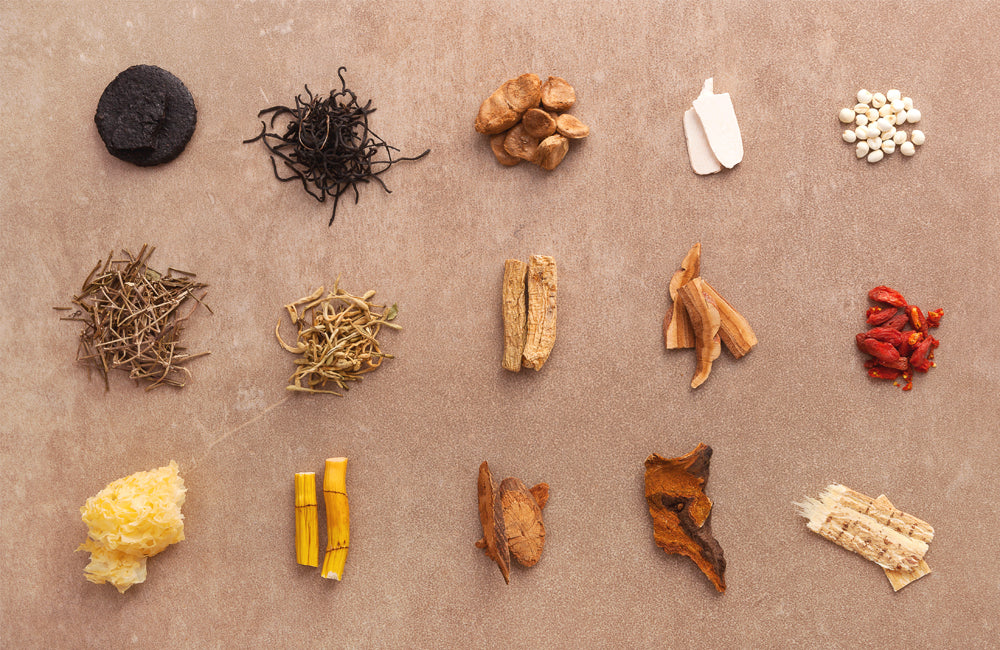
Understanding Plant Secondary Metabolites
Plant secondary metabolites are fascinating compounds that play vital roles in the interaction between plants and their environment. Unlike primary metabolites that are involved in basic metabolic processes, secondary metabolites enhance plant survival through various ecological functions.
These compounds can act as defense mechanisms, attract pollinators, and even aid in plant communication. In herbalism, these compounds are among the primary area of interest when it comes to active effects that support a healthy immune system, mental clarity, better sleep, and relief from occasional aches and pains.
Let’s explore the four main categories of plant secondary metabolites: alkaloids, terpenes and terpenoids, glycosides, and phenolics and polyphenols.
1. Alkaloids
Alkaloids are nitrogen-containing compounds, typically featuring a ring of carbon atoms and a nitrogen atom. These compounds often have a bitter taste and are used by plants as a defense against herbivores. Alkaloids are usually lipophilic, meaning they dissolve poorly in water but well in organic solvents. Many alkaloids are toxic or psychoactive, affecting mood and behavior, and some are stimulants.
Summary
- Contain nitrogen and carbon ring structures
- Usually bitter tasting and lipophilic
- Can be toxic, psychoactive, or stimulants
- Often used by plants for defense
Common Herbs Containing Alkaloids
- Tobacco: Contains nicotine (stimulant)
- Poppies: Contain morphine (pain reliever)
- Coca plant: Contains cocaine (stimulant)
- Peyote cactus: Contains mescaline (psychoactive)
2. Terpenes and Terpenoids
Terpenes are hydrocarbons formed by joining isoprene units, while terpenoids are terpenes that have been chemically modified with additional functional groups like alcohols or ketones. These compounds are responsible for the aromatic qualities of many plants and have antimicrobial, antiviral, and other therapeutic properties. Terpenes and terpenoids are widely used in perfumes, cosmetics, essential oils, and medicines.
Summary
- Composed of isoprene units
- Terpenoids are modified terpenes
- Provide aromatic qualities to plants
- Have antimicrobial and therapeutic properties
Common Herbs Containing Terpenes and Terpenoids
- Lavender: Contains linalool (calming effect)
- Eucalyptus: Contains eucalyptol (antiseptic)
- Tea tree: Contains terpinen-4-ol (antimicrobial)
- Clove: Contains eugenol (pain relief)
3. Glycosides
Glycosides are compounds that consist of a sugar molecule (glycone) and a non-sugar part (aglycone), which can be a terpene, phenolic, or other bioactive group. The non-sugar part is responsible for the medicinal or toxic properties of the glycoside. Glycosides are often bioinactive until they are hydrolyzed, releasing the active aglycone. These compounds have some solubility in water due to their hydroxyl groups.
Summary
- Composed of a sugar part and a non-sugar aglycone
- Non-sugar part determines bioactivity
- Often inactive until hydrolyzed
- Soluble in water to some extent
Common Herbs Containing Glycosides
- Willow bark: Contains salicin (anti-inflammatory)
- Digitalis: Contains digoxin (heart medication)
- Senna: Contains sennosides (laxative)
- Stevia: Contains stevioside (sweetener)
4. Phenolics and Polyphenols
Phenolics are aromatic compounds with one or more hydroxyl groups attached to a phenyl ring. Polyphenols contain multiple phenolic units. These compounds are abundant in plants and play significant roles as antioxidants. Phenolics are also involved in plant coloration and can serve as natural dyes. Due to their structure, they are somewhat soluble in water and contribute to the antioxidant capacity of many herbs.
Summary
- Aromatic compounds with hydroxyl groups
- Polyphenols contain multiple phenolic units
- Act as antioxidants
- Contribute to plant coloration and serve as dyes
Common Herbs Containing Phenolics and Polyphenols
- Green tea: Contains catechins (antioxidants)
- Turmeric: Contains curcumin (anti-inflammatory)
- Red grapes: Contain resveratrol (heart health)
- Thyme: Contains thymol (antiseptic)
Conclusion
Plant secondary metabolites are a diverse group of compounds that significantly enhance the interaction between plants and their environment. Understanding these compounds not only provides insights into plant biology but also helps us harness their benefits for health and wellness. As natural herbalists, incorporating these knowledge into our practice allows us to appreciate the complex chemistry of plants and utilize their therapeutic potentials effectively.
